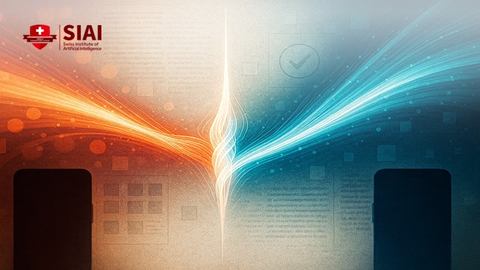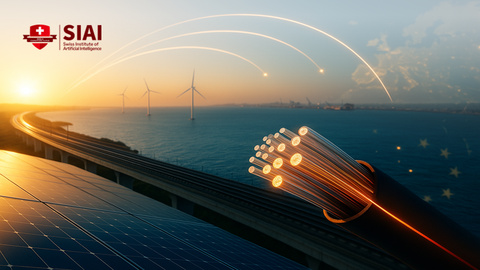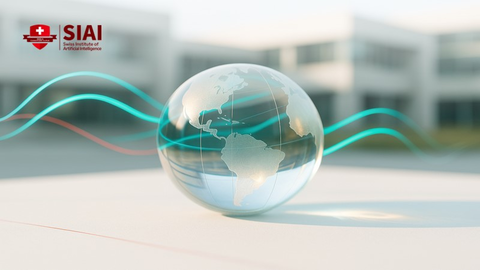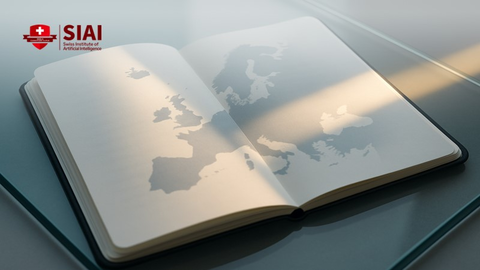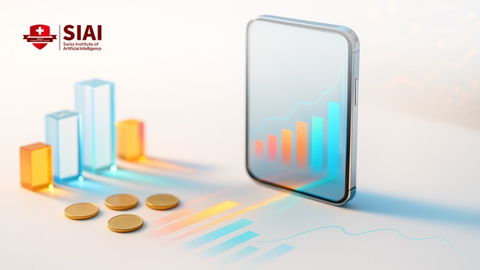EU Global Gateway Needs an Education Core to Beat Goliath
Input
Modified
China wins on speed and scale; the EU Global Gateway must answer with reliability and skills Education, maintenance, and transparent contracts should drive projects to deliver uptime, not just assets With faster procurement and pay-for-performance finance, Europe can win trust without matching China’s spending

In 2025, two Japanese economists measured something that most policymakers had only sensed. When a country joins China's Belt and Road Initiative, a global infrastructure development strategy adopted by the Chinese government involving infrastructure development and investments in nearly 70 countries and international organizations, Japan's infrastructure footprint shrinks quickly. Their event study reveals a 41% drop, resulting in 369 fewer Japanese projects, and a 42% decrease in the number of days foreign leaders spend visiting Tokyo. That shows the cost of losing ground. The EU Global Gateway was designed to avoid this fate, but the power gap is apparent. Since 2000, China's state lenders have financed over $1.3 trillion in overseas projects, becoming the world's emergency backstop for many troubled borrowers. Europe has promised €300 billion by 2027, primarily in the form of guarantees to attract private investment. It may sound substantial, but it isn't. The key question is simple: can the EU Global Gateway succeed when sheer size and speed favor Beijing? Yes, but Europe must prioritize education, maintenance, and local capability in its approach, rather than treating them as secondary.
We need to change the way we view the competition. The benchmark isn't who builds more tracks or pours more concrete. It's about who keeps the power on, the trains running, the fiber operational, and who equips local people with the skills to maintain all three. That's where the EU Global Gateway can outshine Goliath. China may excel in initial construction, but Europe can excel in reliability and trust. This shift is essential now as Belt and Road lending has slowed, bailouts have increased, and many borrowers seek sustainable assets without debt complications. Suppose the EU Global Gateway establishes a standard where every corridor comes with funded skills, local maintenance budgets, and clear contracts. In that case, partners will recognize a different value proposition—less focus on upfront cash, more on lasting service.
EU Global Gateway in a Goliath market
The EU Global Gateway aims to mobilize up to €300 billion in investments by 2027. This includes grants, loans from European development banks, and a significant guarantee program under EFSD+. Commission documents cite a €53 billion guarantee limit, while the European Court of Auditors mentions EFSD+'s guarantee capacity of around €39.1 billion at its launch. Think of it as leverage rather than straightforward cash. In 2023, the Commission announced 90 "key projects." By late 2024, there were 84 flagship projects, followed by 134, with an additional 46 approved for 2025. Most are in Africa, where the Global Gateway plans to mobilize €150 billion. The portfolio places a heavy emphasis on energy and transportation, with less than 10% allocated to education and research. This approach makes sense for attracting investments, but it also overlooks a key opportunity unless human capital develops in parallel.
China continues to dominate in scale. AidData's latest dataset reports $1.34 trillion in Chinese state financing to 165 low- and middle-income countries through 2021. Beijing has also become the go-to lender for emergencies. Research by Horn, Reinhart, Parks, and Trebesch shows over $170 billion in emergency loans and swap lines from 2000 to 2021, with bailout amounts surging as Belt and Road borrowers encountered difficulties. Meanwhile, new Chinese loan commitments have decreased, and a growing portion of existing loans involves principal repayment. This situation poses a stress test for partners but presents an opportunity for Europe. The EU Global Gateway cannot outspend Goliath, but it can design projects that are manageable over the long term, starting with the recruitment of skilled personnel.
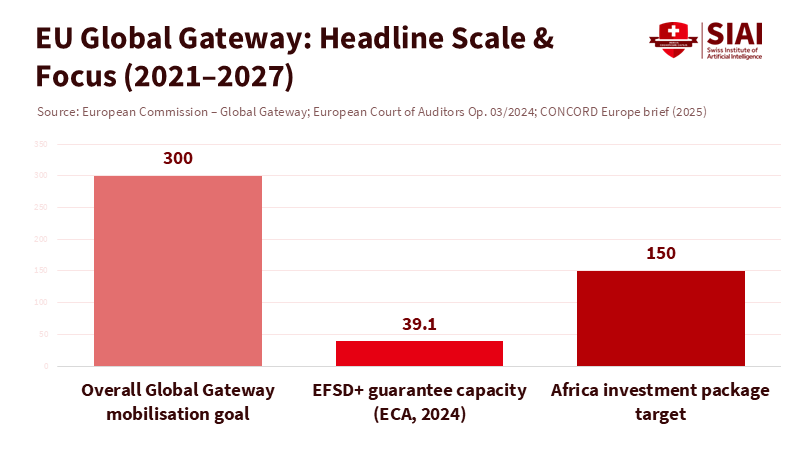
EU Global Gateway and Japan's lessons on speed and scale
Japan first attempted the 'quality alternative.' Tokyo's Partnership for Quality Infrastructure was initiated in 2015 with a $110 billion, five-year commitment through JICA, JBIC, and the ADB. In 2016, it increased to $200 billion and expanded geographically. The reasoning was clear: smaller, safer, better. However, the results were not as promising. New evidence from VoxEU is concerning. In nations that have adopted the Belt and Road Initiative, the number of Japanese projects has sharply declined, and high-level visits to Japan have also decreased. Quality is important, but speed and diplomatic significance are even more critical. The lesson for the EU Global Gateway is not to lower standards but to deliver high standards quickly. Europe requires 'rapid-deployment quality': a streamlined approach that includes early project preparation, secure land, connections, and environmental permits before the official launch. If not, Europe risks repeating Japan's experience on a larger scale.
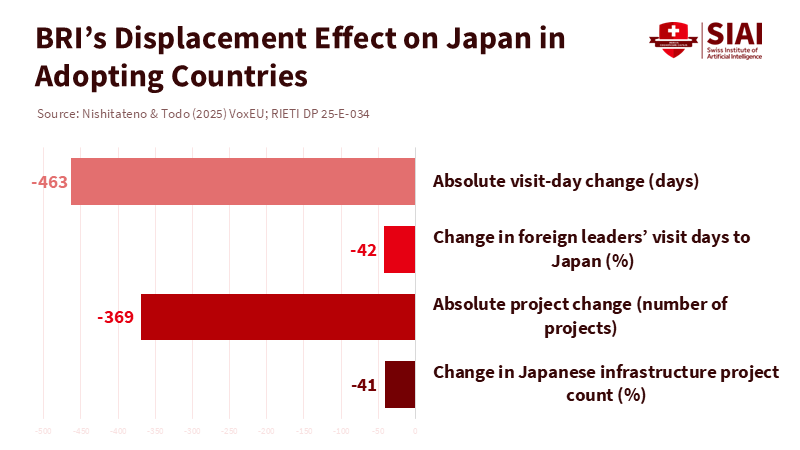
There are ways to expedite processes without compromising quality. One such approach is to utilize 'Team Europe', a collaborative initiative involving various European institutions and agencies, to establish standard terms for recurring projects, such as solar farms, substations, dry ports, grid strengthening, and rural fiber networks. This approach ensures that procurement draws from a list of approved designs, thereby streamlining the process. Linking guarantees to milestones that private contractors understand, such as the number of days until financial closure, the number of days until first power, and the number of days until revenue-grade metering, can also expedite the process. Making these timelines public can further build trust. Focusing on significant corridors rather than unrelated projects can also accelerate the process. The Lobito Corridor serves as a live case study. Suppose the EU Global Gateway can facilitate a trilateral agreement among Angola, the DRC, and Zambia, resulting in quicker ore transport, lower freight costs, safer trains, and a trained local maintenance workforce. In that case, the narrative will shift from 'David' to 'reliable partner'. Achieving this will necessitate a single project office, one data room, and a vocational program that begins before the first sleeper is installed.
Speed alone won't build trust if partners can't see the money flow. Here, the EU Global Gateway has work to do. The Commission has celebrated flagship lists, but independent reviews highlight inadequate disclosure. The European Court of Auditors highlights weaknesses in the new guarantee model's additionality and leverage. Analysts from the Center for Global Development note a lack of financial and impact details, as well as a persistent underemphasis on human capital. These are not insurmountable issues; they are fixable governance challenges. By providing clear dashboards for every corridor that display the capital stack, guarantees used, local content, training hours delivered, and operational uptime, the EU Global Gateway can demonstrate its commitment to transparency and build trust with its partners.
EU Global Gateway for skills, maintenance, and trust
This is the turning point. Europe should prioritise human capital as much as hardware. CGD's review reveals that less than 10% of flagship projects involve education and research. Change that focus to the corridor level. For every euro spent under the EU Global Gateway, allocate a fixed portion for training, certification, and on-the-job mentoring. Connect payments to skill milestones established and verified by the host government. Set up local diagnostics labs, spare parts depots, and training areas adjacent to substations and stations. Leverage Europe's strengths in standards to establish transferable credentials. Then incorporate that reliability into financing by offering lower interest rates or longer terms when uptime surpasses set thresholds. This provides a real edge on value—beyond just ideals.
Educators play a crucial role. Universities and technical colleges can create brief, flexible programs that mirror actual Global Gateway assets. Consider courses on maintaining 30- to 60-MW solar plants, predictive maintenance for AC electrified rail, or fiber-to-site backhaul for medical cold chains. Courses should include practical experience in the specific corridor that students will be responsible for. They should also cover procurement basics, including what a performance bond is, how to read a power purchase agreement, and when to escalate warranty claims. When graduates can interpret a contract as adeptly as a circuit diagram, operational uptime improves and disputes decrease. The EU Global Gateway can support this training financially through corridor operations and maintenance budgets rather than separate education funding. This makes skills a necessary part of keeping services running, not just a hopeful claim.
Administrators can implement rules to make this effective. Require "skills-backed procurement" for every EU Global Gateway contract. A winning bid must outline the number of technicians to be trained, the local institutions to receive funding, and the methods for engaging those workers after the project. Evaluate bids based on measurable training results and publish those evaluations. Establish "pay-for-uptime" contracts where maintenance providers earn bonuses for sustained service and penalties for extended downtimes. Utilize EFSD+ guarantees to minimize risks for local banks that finance spare parts and tools, ensuring that a broken inverter or failed axle doesn't languish at the dock for months. Publish a real-time parts availability index to signal to investors and guide planners. This work may seem unexciting, but it's how partners assess reliability.
Policymakers must accurately interpret macroeconomic signals. China remains the largest builder globally. However, it is now focused more on rescue lending and debt negotiations as previous loans become due. AidData shows extensive use of swap lines and bailouts. New lending commitments have slowed, and many governments are increasingly concerned with lifetime costs over initial capital expense. This is Europe's moment. Offer clear contracts, visible subsidies, reliable guarantees, local currency options when possible, and swift public dispute resolution. Anchor all initiatives in skill development. In practice, this means creating corridors that can withstand budget shocks or weather events without requiring assistance from Beijing, Brussels, or Paris. Reliability—not just promises—will encourage leaders to travel to Europe more frequently and stay for more extended periods.
There will be resistance. Critics may argue that education is slow and political terms are brief. They might insist that partners want bridges instead of training, and megawatts, not educational modules. They may point out that Europe's procurement is slow and that this is a global race. The response shouldn't be to imitate Beijing. It should be to shorten Europe's own timelines while raising the standards for what "good" means. Implement fast, transparent procurement using pre-approved templates. Create dedicated project offices for each corridor. Maintain live dashboards. Ensure that training is directly tied to maintenance, rather than being handled by government ministries. None of these changes compromises standards; all reduce friction. This approach aligns with Europe's strengths: safety, the rule of law, and institutions that outlast any single leader.
A more durable ending
The Japanese statistics should not alarm Europe; it should sharpen its focus. A 41% drop in Japanese projects following a partner's adoption of the Belt and Road is a reminder that speed and visibility influence diplomacy. The EU Global Gateway will not succeed by simply spending more than China or by lecturing its partners. It will grow by ensuring reliability through people, not just delivering assets marked with logos. The call to action is clear. In the next two years, select three corridors and integrate education and maintenance into their funding and contracts. Make timelines visible. Train the teams. Tie payments to results. When a hospital's power grid withstands a heatwave, when a train meets its service schedule, or when a fiber break is quickly repaired, partners will remember who came with the right tools and training. That's how the EU Global Gateway can overcome Goliath—not through size, but through steady and careful actions.
The views expressed in this article are those of the author(s) and do not necessarily reflect the official position of the Swiss Institute of Artificial Intelligence (SIAI) or its affiliates.
References
AidData. 2023. Belt and Road Reboot: Beijing's Bid to De-Risk Its Global Infrastructure Initiative (report and dataset). Williamsburg, VA: AidData at William & Mary.
AidData. 2023. Global Chinese Development Finance Dataset, Version 3.0 (20,985 projects; $1.34 trillion, 2000–2021). Williamsburg, VA: AidData at William & Mary.
Center for Global Development (Gavas, M. & Granito, L.). 2024. "What the Global Gateway Flagship Projects Tell Us about the EU's Priorities." Washington, DC: CGD Blog.
CEPR VoxEU (Nishitateno, S. & Todo, Y.). 2025. "Infrastructure diplomacy in the shadow of the Belt and Road: Lessons from Japan's experience." London: CEPR.
European Commission. 2023–2025. "Global Gateway—Overview and Financing." Brussels: Directorate-General for International Partnerships.
European Commission. 2025. "Global Gateway in Africa—Investment Package Update." Brussels: DG INTPA News.
European Council. 2024. "Global Gateway: Council endorses flagship project list for 2025." Brussels: Council Press Release.
European Court of Auditors. 2024. Opinion 03/2024 on EFSD+ Guarantee and Global Gateway financing model. Luxembourg: ECA.
Japan Ministry of Foreign Affairs. 2015/2016. "Partnership for Quality Infrastructure" and Expanded PQI Announcement. Tokyo: MOFA.
U.S.–EU. 2023. "Joint Statement on Support for the Lobito Corridor." Washington, DC & Brussels: White House Archives.

